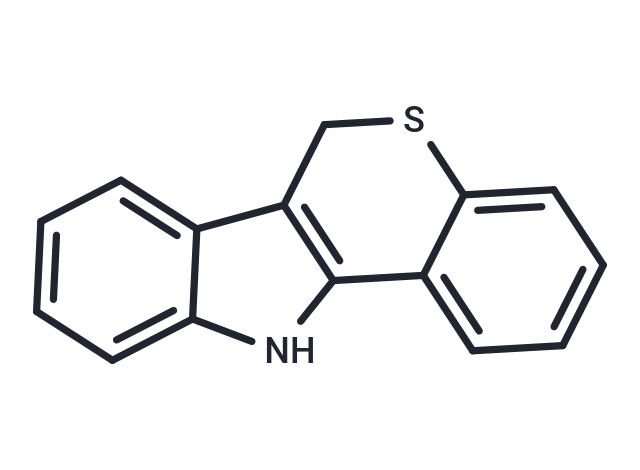Shopping Cart
- Remove All
 Your shopping cart is currently empty
Your shopping cart is currently empty

PD146176 (NSC-168807) is an inhibitor of 15-Lipoxygenase (15-LO) , it inhibits rabbit reticulocyte 15-LO with Ki of 197 nM and IC50 of 0.54 μM. PD146176 reverses cognitive impairment, brain amyloidosis, and tau pathology by stimulating autophagy in aged triple transgenic mice.

| Pack Size | Price | Availability | Quantity |
|---|---|---|---|
| 5 mg | $41 | In Stock | |
| 10 mg | $74 | In Stock | |
| 25 mg | $148 | In Stock | |
| 50 mg | $275 | In Stock | |
| 100 mg | $482 | In Stock | |
| 1 mL x 10 mM (in DMSO) | $45 | In Stock |
| Description | PD146176 (NSC-168807) is an inhibitor of 15-Lipoxygenase (15-LO) , it inhibits rabbit reticulocyte 15-LO with Ki of 197 nM and IC50 of 0.54 μM. PD146176 reverses cognitive impairment, brain amyloidosis, and tau pathology by stimulating autophagy in aged triple transgenic mice. |
| Targets&IC50 | 15-LOX:IC50: 0.54 μM, 15-LOX:Ki: 197 nM |
| In vitro | 15-LO by PD146176, an inhibitor of 15-LO with an IC50 in cells or isolated enzyme of 0.5-0.8 microM, may limit atherosclerotic lesion development through regulation of monocyte-macrophage enrichment.?Rabbits exposed to chronic endothelial denudation of the iliac-femoral artery were meal-fed a 0.25% cholesterol (C), 3% peanut oil (PNO), 3% coconut oil (CNO) diet twice daily with and without 175 mg/kg PD146176 for 12 weeks.?In a second study, atherosclerotic lesions were pre-established in rabbits through chronic endothelial denudation and meal-fed a 0.5% C, 3% PNO, 3% CNO diet for 9 weeks and a 0% C/fat diet for 6 weeks prior to an 8 week administration of PD146176 at 175 mg/kg,?q.d. Plasma total and lipoprotein cholesterol exposure were similar in control and PD146176-treated animals in both studies but PD146176 increased plasma triglyceride exposure 2- to 4-fold.?Plasma PD146176 concentrations ranged from 99 to 214 ng/ml at 2 h post-dose.?In the progression study, the iliac-femoral monocyte-macrophage area was reduced 71%, cross-sectional lesion area was unchanged and cholesteryl ester (CE) content was reduced 63%.?In the regression study, size and macrophage content of iliac-femoral, fibrous plaque-like lesions were decreased 34%, CE content was reduced 19% and gross extent of thoracic aortic lesions were reduced 41%.?PD146176 can limit monocyte macrophage enrichment of atherosclerotic lesions and can attenuate development of fibrofoamy and fibrous plaque lesions in the absence of changes in plasma total or lipoprotein cholesterol concentrations[1]. |
| Alias | NSC168807 |
| Molecular Weight | 237.32 |
| Formula | C15H11NS |
| Cas No. | 4079-26-9 |
| Smiles | C1Sc2ccccc2-c2[nH]c3ccccc3c12 |
| Relative Density. | 1.333g/cm3 |
| Storage | Powder: -20°C for 3 years | In solvent: -80°C for 1 year | Shipping with blue ice. | |||||||||||||||||||||||||||||||||||
| Solubility Information | DMSO: 25 mg/mL (105.34 mM), Sonication is recommended. H2O: < 0.1 mg/mL (insoluble) | |||||||||||||||||||||||||||||||||||
Solution Preparation Table | ||||||||||||||||||||||||||||||||||||
DMSO
| ||||||||||||||||||||||||||||||||||||

Copyright © 2015-2024 TargetMol Chemicals Inc. All Rights Reserved.